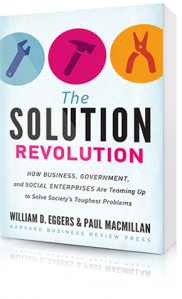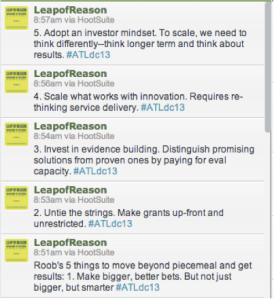I have become a single-issue voter.
I will never vote for someone who does not support common-sense solutions to our uniquely American epidemic of gun violence. I will actively support, with all time and resources at my disposal, any candidate with a commitment to preventing gun violence. And given the choice between candidates without a strong commitment to stopping gun violence either way, I will either choose not to vote, or vote for the person I think more likely to support common-sense solutions to gun violence in the future.
I am surprised that I am making this declaration. I never thought I’d become a single-issue voter, much less on this issue. But I fear for the safety of the people I care most about, and I don’t see anything else I can do.
Of course, like most Americans born after the 1970s, gun violence has been a constant in my life, albeit more like a constant background noise. One of my most vivid memories is from elementary school on the day after the Columbine shooting. I had heard about it on the radio that morning, but, to be honest, it didn’t affect me that much. I didn’t understand it. It seemed far away—like a movie. In class that day, our principal stopped by to talk with my teacher. While they were discussing something, I talked with my friends; we were teasing each other. My friend, Christina, was lightly teasing me about something (I don’t remember what), and I said to her: “Shut up, Christina, nobody likes you.” At the moment I said that, the principal walked right by my desk. He stopped, looked at me, and told me to get up and go with him into the hallway. He said: “Do you know what happened in Colorado?” I said yes. He said it was people like me saying things like what I had said that caused that sort of thing. I will never forget that.
Since then, mass shootings and other forms of gun violence have come and gone: Virginia Tech, Tucson, Aurora, Sandy Hook, San Bernardino, Charleston, Orlando, Las Vegas, and now Parkland. These were once just names of places—places that I may or may not have ever heard of before, but now they will always be associated with the most extreme form of violence and murder that continues to be a decidedly American problem.
Since Columbine, this problem continued to gnaw at me, in the background. I began to research it, learn more about why we as a country could not seem to solve it. I had been told we were a great country—the greatest in the world. That we put a man on the moon, and we could do anything. Yet we were letting children die in the places they should be the safest: schools, malls, churches.
I learned about the history of the Second Amendment. I learned about how public health epidemics spread. I learned about how other countries had dealt with gun violence. I learned about how racism and fear of militarized civil rights groups—most notably the Black Panthers—created the first wave of gun safety laws in this country. I learned about how the NRA and other conservative organizations re-defined the Second Amendment and created a “gun culture” that placed certain rights for some over the rights of others, to the benefit of gun manufactures and arms dealers. And I learned about how politicians, of both parties, didn’t have the courage to do what was right and create laws that had been proven, repeatedly, to save lives.
During this journey, I discovered something surprising about myself: I wasn’t anti-gun. Growing up in a liberal enclave in Minneapolis, I just assumed that guns were bad and we shouldn’t have any. When I dug into the issue, I realized that, in fact, the vast majority of gun owners are responsible and use their guns for legal and safe purposes—hunting, target shooting, and yes, self-defense. I learned that the current interpretation of the Second Amendment, regardless of what you think of it, guarantees the right to own a firearm for self-protection. I also realized I didn’t have a problem with someone concealing and carrying a weapon in public, given that person was law-abiding and had the proper training and credentials. (This right to conceal and carry isn’t guaranteed by the current interpretation of the constitution.) As long as these gun owners were responsible stewards of their weapon, and they use it for legal purposes, why should the government tell them what to do with it?
Much of this discovery happened through my involvement with a local chapter of Moms Demand Action for Gun Sense in America—a group that advocates for common sense gun laws, but is also pro-Second Amendment. The group maintains that there are solutions that both protect the rights of gun owners, but also protect all Americans from gun violence. These solutions are universally popular: Full background checks on gun sales; barring those with histories of domestic abuse from owning guns; barring those with severe mental health problems from owning guns; safely storing guns out of the reach of children, etc. These policies and others like them have been shown to save lives.
Yet, these policies are not the laws of the land. And this is the central problem of the “gun debate”, and why I have become a single issue voter: We are not willing to pass laws that save lives, and instead, over the last few decades, this country has passed law after law that makes it easier for dangerous people to purchase a weapon. Only nine states require background checks on all gun purchases. There are 12 states that do not require a permit for concealing and carrying a loaded gun in public. This means that a person in America with a history of domestic violence or other violent behavior can buy a gun, load it, conceal it, and walk out in public, all without encountering any resistance from law enforcement officers who have sworn to protect the American public against acts of violence.
So this is why I am a single-issue voter, and why there need to be more single-issue voters like me. Our elected leaders are actively ignoring policies that save lives. At best, this ignorance is a misguided attempt to protect people—some politicians, however misguided, probably do actually believe that more guns save lives. (The notion that a bad guy with a gun can only be stopped by a “good gun with a gun” was disproven most recently in Parkland, where an armed police officer didn’t stop the murderer. And, as the founder of Moms Demand Action Shannon Watts says, if more guns increased safety, the US would be the safest place on Earth. It is not.)
At worst, the refusal to enact common sense laws is a privileging of the desire of a certain group of people to immediately own any gun they want, for any reason, over the life, liberty and pursuit of happiness of the tens of thousands of people who die because of guns, every year.
But regardless of why our leaders do not feel the need to enact common sense gun laws, the reality remains the same: People are dying while nothing gets done. I’m no longer interested in why politicians are motivated to do what they do—I’m interested in the action they take to keep my family safe and help us and other families thrive. Maybe they are afraid of angry voters who perceive safety measures as government overreach. Maybe they are afraid of what the NRA will say about them. But regardless, they are abdicating their duty as elected officials and not protecting the people they have sworn to serve. They have broken the public’s trust and should not be allowed to make decisions on behalf of citizens.
I ask you to join me as a single-issue voter. But know I am not asking you to join me as a Democratic voter. Because although the Republican Party is most aligned with anti-gun violence measures, the recalcitrance on gun violence is a bipartisan problem. (On the 2017 vote on “Conceal Carry Reciprocity,” which would essentially force all states to accept the weakest gun safety laws, 14 Republicans voted against it, and six Democrats voted for it. Five Democrats voted against the post-Sandy Hook gun safety reforms; four Republicans voted for it.) This isn’t about Democrats or Republicans. This is about the safety of our kids and our loved ones.
Although I’m not certain of this, I have a feeling that a commitment to ending gun violence is an indication of support for many issues I care about: helping families thrive, improving healthcare for all, reducing income inequality, ending racial injustice, etc. Because if you don’t care about kids dying, why would you care about anything else that helps everyday people?
If you are a public official and you are not actively doing what you can to make our communities safer, then you have blood on your hands. You are staying silent as our uniquely American carnage—to quote the president—continues.
This is a hard problem. But it is a problem we can solve. Every other country with our level of wealth has already solved it. So join me as a single-issue voter and let’s do what we need to do.
(If you want to take action to help end gun violence, sign up to be a “Gun Sense” voter, which is an initiative between Everytown and Moms Demand Action.)
Photo credit: RHONA WISE/AFP/GETTY IMAGES







